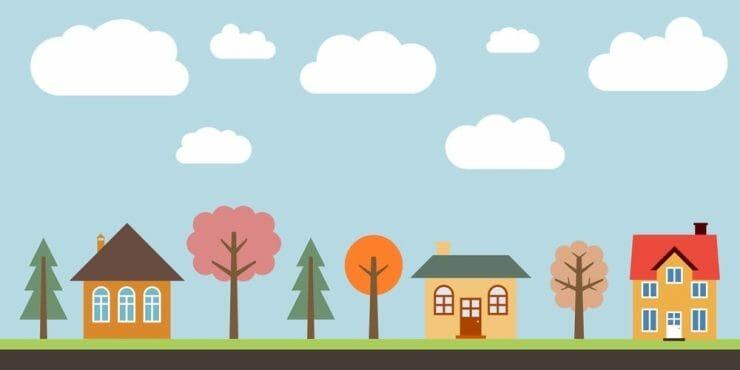Quick Navigation
- How Do I Know If a Neighborhood Is Safe?
- Step 1: Drive Through and Observe the Community
- Step 2: Talk to Local Residents About Neighborhood Safety
- Step 3: Check How Many Houses Are for Sale
- Step 4: Check the National Sex Offender Registry
- How Do I Research a Neighborhood?
- AreaVibes
- Family Watchdog
- SpotCrime
- SpotCrime
- NeighborhoodScout
- How Do I Find Out the Crime Rate in My Area?
- How Can I Live in a Bad Neighborhood?
- How Do I Find Out the Crime Rate in My Area?
- Step 1: Knowing the Neighbors
- Step 2: Protection
- Step 3: Bits and Bobs that Save Lives
- Step 4: Stay Alert
- A Few Final Words
In a perfect world, we would all be safe. However, even the “safest” areas on our planet have no-go zones and dubious neighborhoods. For instance, Sweden, a former bastion of safety among the Nordic countries, has plenty of “vulnerable areas” where crime can’t seem to stop thriving for years now. Such places also exist in other Western countries, like France, Canada, Germany, and the Netherlands. Sadly, the local news media tends not to call them “no-go zones.” The USA isn’t far behind, and I have personally lived in such areas before; they are no picnic, I can tell you that.
But let’s say that I want to move somewhere new right now, and I have a neighborhood in mind. How safe is my neighborhood of choice, and how do I go about finding that out? With the advent of the internet, we have plenty of tools to find out the answer to that question.
How Do I Know If a Neighborhood Is Safe?
This question might seem similar to a few others that I plan on answering, but there is a small difference between ‘knowing if a neighborhood is “safe” and “researching a neighborhood.”
Researching a neighborhood will require special online tools, which I’ll get into a little later. But you can still do a basic “sweep” of an area and go with your gut instinct. Here are some of the steps you can take.
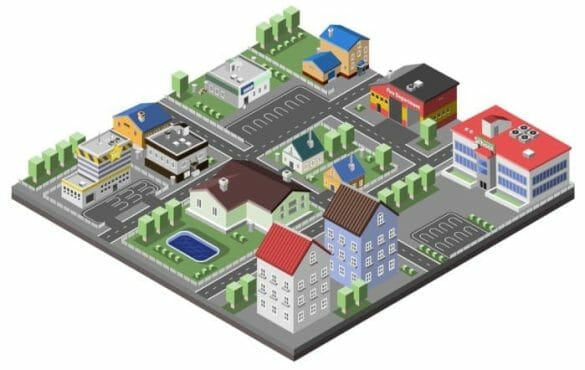
Step 1: Drive Through and Observe the Community
Before moving into a community, it’s a good idea to get some first-hand impressions. When I was shopping around for a new house about half a decade ago, I found the perfect neighborhood. However, there wasn’t a lot of information on it online. So I sat in my car, and I observed the homes around it.

A telltale sign that you’re looking at a safe neighborhood is children playing outside, either in the yards or out in the streets. In addition, if they move freely between houses or drive their bikes (or tricycles, segues, skateboards, or rollerblades), that’s a good sign. You won’t usually see too many children in an area with high crime rates.
One more obvious sign that you’re looking at a safe neighborhood includes local public events. Are there garage sales, bake-offs, barbecues, get-togethers, or even mini-festivals? If so, the chances are that there’s almost no crime within the local community.
It’s a well-known fact that a financially stable community will almost always have a low crime rate. With that in mind, I always pay attention to the local businesses. If there are lots of shops, markets, bookstores, and ice cream shops, there’s probably next to no theft, burglary, assault, or vandalism.
Finally, the best indicator of a healthy and crime-free neighborhood is the presence of a neighborhood watch. Neighbors who take pride in their community will do everything they can to protect it and maintain the level of crime to a minimum. To me, a community with a neighborhood watch is a community I’ll move into without question.
Step 2: Talk to Local Residents About Neighborhood Safety
Naturally, just driving by and observing the homes won’t be enough in some cases. If you happen to be unsure of the situation, you can always get out of your car and talk to the locals. I did that during my own scouting of the neighborhood just to be on the safe side.
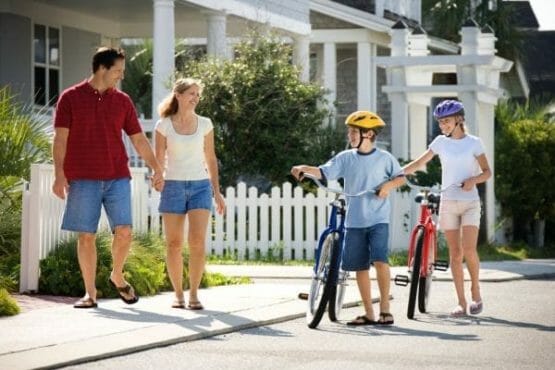
When I was driving along, I spotted a group of four people, including two elderly ladies, a middle-aged man, and a 16-year-old high-schooler. I approached them, kindly introduced myself, and we started talking about security issues. When I asked them about any neighborhood crime, they all gave me the same answer — there hadn’t been any major crime in decades.

But there is another benefit to talking with the locals. Sometimes, a neighborhood might just not be the best fit for you or your lifestyle. For example, your neighbor might be a craftsman who uses lots of loud tools or a rocker that strums her guitar late into the night, making noise. Once you talk to the locals and get the “feel” for the community, you can decide whether or not you want to move in.
Step 3: Check How Many Houses Are for Sale
If there are lots of homes for sale in a neighborhood, be careful. That can very well be an indicator of criminal activity. For instance, a single street can have a streak of burglaries that can push the neighbors to sell their homes.
But on the other hand, even if there isn’t a lot of crime in an ‘“empty” neighborhood, it’s still not a good idea to move there. Squatters and homeless folks tend to break into empty houses and spend nights there. On a more dangerous note, empty homes have been used as meth labs in the past. In short, it’s better to pick a place to settle down in a populated neighborhood.
Step 4: Check the National Sex Offender Registry

The National Sex Offender Registry covers the names and places of residence of nearly every known sex offender in the United States. Looking over the data, you can see how frequently this type of crime occurs in the neighborhood you want to move into. This step is especially important for people with underage children.
How Do I Research a Neighborhood?
In 2020, the internet has become a powerful tool for nearly all aspects of our lives. Most people who are thinking about moving can use several different websites to research their desired neighborhoods. I highly encourage you to use them all since they have proven to be quite reliable and accurate.
AreaVibes
AreaVibes is a website that plots any location you type into its search box. It’ll provide you with an accurate livability score, ranging from 1 to 100. This livability score includes different aspects of living, including education, crime reports, housing, amenities, and even business opportunities. With this tool, you can break down crime statistics by type (violent crime, sexual assault, etc.), the number of reported incidents, and the number of crimes per 100,000 residents.
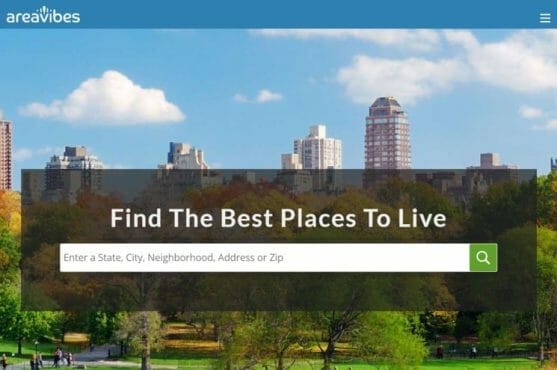
One cool feature of AreaVibes is that it can compare local crime statistics to national averages. That way, you can see the bigger picture and make an informed decision about moving in.
Family Watchdog
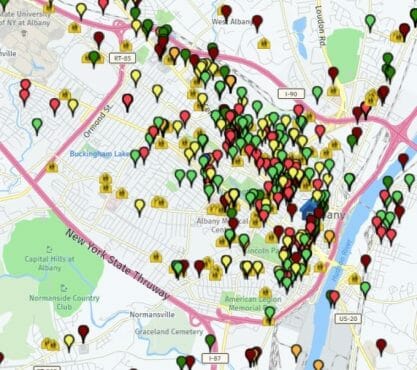

Family Watchdog’s main focus is to map all of the registered sex offenders in an area. It color-codes the crimes based on the type of offense (rape, sexual assault, sexual abuse of minors, etc.), which I find extremely helpful since it’s a great way for parents to learn which neighborhoods to avoid. One amazing feature of Family Watchdog is that you can sign up to receive alerts when a sex offender moves into your neighborhood. The safety of your kids is your primary concern, and this website will definitely help you avoid any nasty encounters.
SpotCrime
Every time a law enforcement agency, a news article, or an individual reports a crime over social media, SpotCrime will pick it up. I can get alerts for real-time crimes in my area, such as arson, assault, theft, vandalism, or burglary. It’ll even notify me of any arrests within my zip code.

SpotCrime
CityProtect used to be called CrimeReports; both websites use the same basic principle of crime mapping. You can search the website by region, zip code, or an individual law enforcement agency to see any recent police activity in the area.
NeighborhoodScout

The last on the list, NeighborhoodScout, takes a more direct approach than the other websites I’ve listed. Instead of showing crime maps based on real-time offenses, it compares different neighborhoods and ranks them. The website covers the overall crime rate, violent crime rate, and the rate of property crime. Once I have this data, I can compare the rate of crime in my area with the national average.
How Do I Find Out the Crime Rate in My Area?
Checking the crime rate by address or zip code isn’t too different from checking crime statistics by city, state, or country. You can use every tool I’ve mentioned above on a small scale. All you need to do is enter the relevant info and then cross-reference all of the results. That way, you’ll have a clear picture of how safe you really are.
How Can I Live in a Bad Neighborhood?
Sometimes, we just can’t avoid living in a bad area. I remember not having any money and living in a shady apartment building with lots of unsavory tenants. When you’re left without a choice, you need to do everything you can to avoid being the victim of criminal activity. Here’s a quick and handy guide to all of my readers who happen to live in the “rotten side of town.”
How Do I Find Out the Crime Rate in My Area?
Step 1: Knowing the Neighbors
Talking to people and getting to know them will tell you what they’re generally like. Once you get to know the people around you, you can either avoid them if they’re nasty or get close to them if they prove to be decent. The decent neighbors will almost always have your back. After all, you have to live next to one another, so a bit of camaraderie will help you both. On the other hand, avoiding shady neighbors will reduce the risk of getting into a conflict.

Step 2: Protection
Within your home, your first line of defense should be a decent alarm system and a big, burly watchdog. The former will notify you of any break-in, and the dog will protect you if the burglar decides to rob you. In addition, you might think of getting a pepper spray or a taser (if owning a taser is legal in your state, that is). Lastly, if you can afford it and if the state law allows it, get yourself a firearm and some ammo. In a life-and-death situation, it always pays to come prepared.
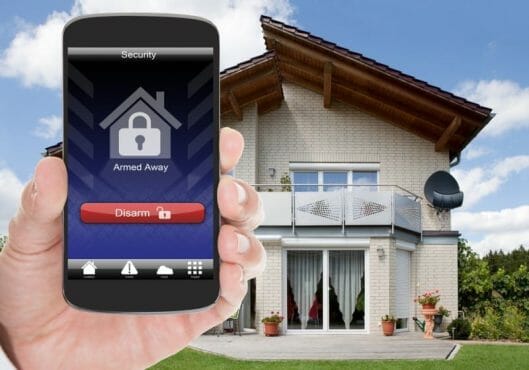
Step 3: Bits and Bobs that Save Lives
Personally, I feel a bit silly that I have to mention the following information since it’s all common sense stuff. But so many people get robbed or assaulted simply because they failed to do some of the most basic things before leaving their house. Whenever you’re not around, you should:
- Lock your doors
- Close your windows
- Keep the lights on during the night
- Check the bushes in front of the house
- Lock the outside fence doors
- Turn on the alarm system
As I stated, all of these things seem trivial, but the difference between a closed and an open window may save your life one day.
Step 4: Stay Alert
When going outside in a bad neighborhood, it’s a good idea to pay attention to your surroundings. In my case, I never look at my phone when walking down a crowded street. In addition, I check to see if a stranger might be following me, especially if they’re someone I’ve not seen in my neighborhood before. Walking with confidence and holding my head up high also helps since criminals tend to avoid attacking confident-looking passers-by. In case something suspicious happens, I always get ready to run and keep my phone close by if I need to call 911 quickly.
A Few Final Words
Finding a good, safe neighborhood isn’t easy, but it’s incredibly rewarding once you do. Living in a crime-free area comes with plenty of benefits, including better physical and mental health, proper socialization, and a space for artistic and entrepreneurial growth. Hopefully, the steps I’ve provided above will help you find that perfect, crime-free community that you seek. Please let me know what you thought of this article by leaving your comments down below.

